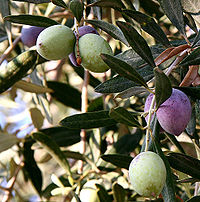
Photo from wikipedia
In this work the management of a waste called off-specification compost (OSC) was proposed via hydrothermal carbonization (HTC). The composition of this residue makes it not suitable for agronomic purposes… Click to show full abstract
In this work the management of a waste called off-specification compost (OSC) was proposed via hydrothermal carbonization (HTC). The composition of this residue makes it not suitable for agronomic purposes because of the Spanish regulation requirements. Therefore, a way of management and/or valorisation needs to be found. The energy recovery through co-HTC with olive tree pruning (OTP) was evaluated. Blending of OSC with lignocellulosic biomass allows to obtain a coal-like product with physicochemical properties similar to those of a lignite, characterised by its high carbon content. Blends of 25, 50 and 75% of OSC with OTP were analysed. The individual OSC does not present good parameters for being used as solid fuel based on its chemical composition, however, the blend of 75% of biomass with 25% of OSC does. With a higher heating value of 26.19 MJ/kg, this blend shows the best energy yield and energy densification ratio. Thermogravimetric and kinetic analysis reveal that as biomass content in the blend increases, the more the hydrochar behaves as a solid fuel, therefore OSC can be used for energy purposes while its current use of landfill disposal can be reduced.
Journal Title: Waste management
Year Published: 2021
Link to full text (if available)
Share on Social Media: Sign Up to like & get
recommendations!